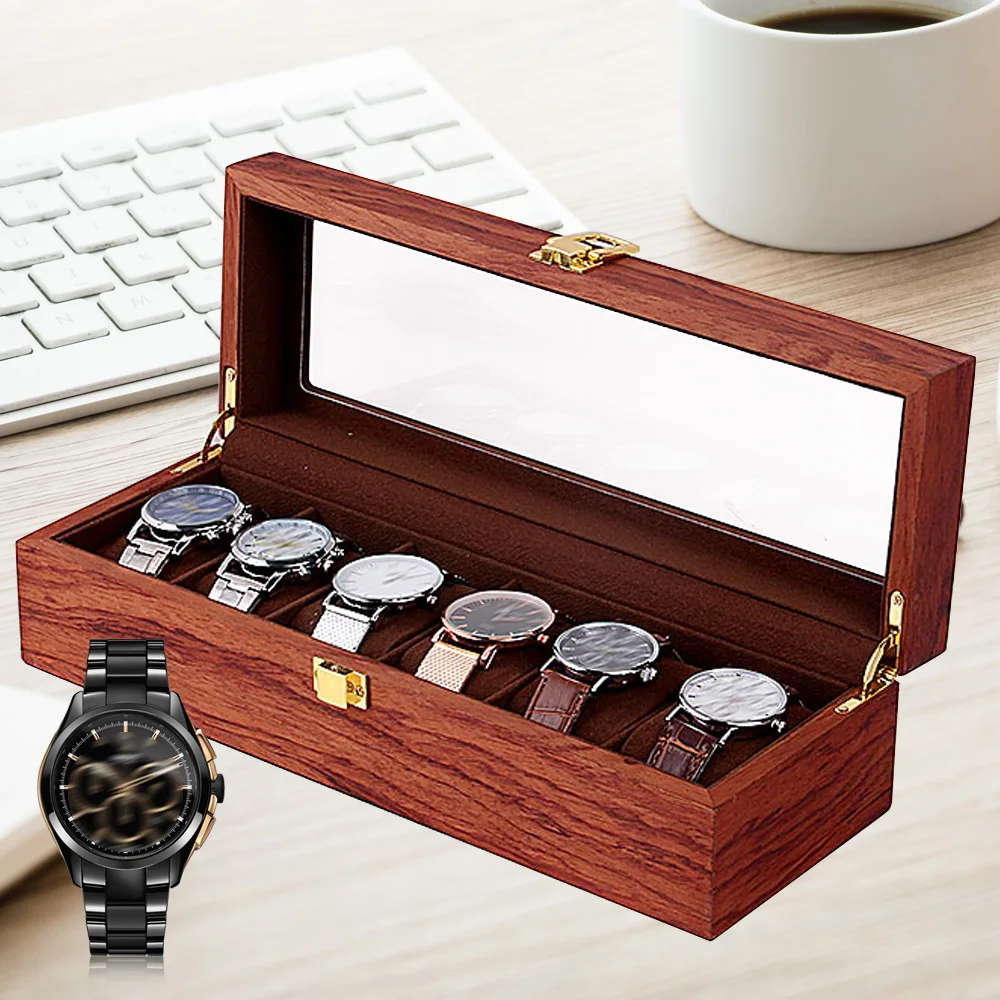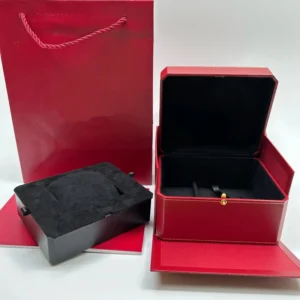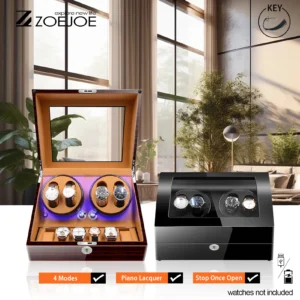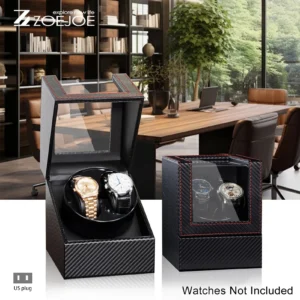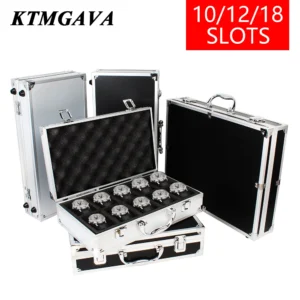Introduction: The Crucial Choice Between Wood and Leather Watch Boxes
For watch collectors, the storage solution you choose is nearly as important as the timepieces themselves. The right watch box doesn’t just organize your collection—it protects your investment while showcasing your prized possessions. When considering materials, collectors often find themselves torn between two classic options: wood and leather.
Making an informed decision between these materials impacts:
- How well your watches are protected from environmental factors
- The aesthetic presentation of your collection
- The longevity of both your watches and their storage solution
- How the box integrates with your home decor and collecting lifestyle
The choice between wood and leather isn’t merely aesthetic—it’s functional. Each material offers distinct advantages in humidity control, protection capabilities, and visual appeal. Understanding the nuances of choosing wood or leather watch boxes helps collectors make decisions that will serve them for years to come.
In this comprehensive comparison, we’ll explore the defining characteristics of each material, their strengths and limitations, and which scenarios might call for one over the other. By the end, you’ll have a clear understanding of which material aligns best with your collection’s needs.
Wood vs Leather Watch Boxes: At-a-Glance Comparison
Before diving into the details, let’s examine how wood and leather watch boxes compare across key factors that matter most to collectors:
| Feature | Wood Watch Boxes | Leather Watch Boxes |
|---|---|---|
| Durability | Excellent structural integrity; can last generations with proper care | Good durability; susceptible to scratches but ages gracefully |
| Aesthetics | Traditional, classic, showcases natural grain patterns | Sophisticated, luxurious, smooth and elegant texture |
| Maintenance | Periodic polishing, protection from humidity changes | Regular conditioning to prevent drying/cracking |
| Dust Protection | Very good when properly sealed | Good to very good depending on construction |
| Humidity Resistance | Moderate; can absorb some humidity but may warp with extreme changes | Good; less affected by humidity changes |
| Weight | Heavier; less portable | Lighter; more portable |
| Price Range | $100-$500+ (quality dependent) | $80-$400+ (quality dependent) |
| Environmental Impact | Varies; sustainable options available | Varies; traditional tanning has higher impact |
| Longevity | 20+ years with proper care | 10-15+ years with proper care |
This comparison highlights how wood and leather watch storage options differ in fundamental ways that affect collector experience. While both materials can provide excellent protection for your timepieces, your specific needs and preferences will determine which material serves you better.
The Allure of Wood Watch Boxes: Tradition Meets Protection
Wood watch boxes represent the classic choice for serious collectors, combining time-honored craftsmanship with reliable protection. The natural beauty of wood creates a distinguished home for fine timepieces that’s as much about display as storage.
Common Woods Used in Quality Watch Boxes:
- Walnut: Rich, dark tones with excellent durability
- Oak: Strong, resistant to warping, distinctive grain patterns
- Cherry: Warm reddish hues that deepen with age
- Maple: Light colored, extremely durable, fine grain
- Ebony: Luxurious dark appearance, dense and heavy
- Burl Wood: Distinctive swirling patterns for a unique look
Advantages of Wood Watch Boxes:
The benefits of wooden watch storage are numerous, particularly for collectors with established collections. Wood provides superior structural integrity and often features precisely engineered compartments that keep watches securely in place. The natural aesthetic warmth of wood complements traditional watch designs, especially vintage and classic timepieces.
Wood’s substantial weight and solidity create a sense of permanence and importance that matches the significance of a quality watch collection. Additionally, well-crafted wood watch boxes offer excellent protection against light exposure, which can fade watch dials over time.
Potential Limitations:
Despite their advantages, wooden watch boxes do have considerations to keep in mind. They’re generally heavier and less portable than leather alternatives. They can also be sensitive to significant humidity changes, potentially leading to warping or cracking in extreme conditions. Proper maintenance requires occasional polishing and keeping the box away from direct sunlight or heating sources.
Leather Watch Boxes: Luxurious Protection with Modern Appeal
Leather watch boxes offer a sophisticated alternative that combines elegance with practicality. The tactile pleasure of fine leather adds a sensory dimension to the watch collecting experience, with the material’s supple texture complementing the craftsmanship of luxury timepieces.
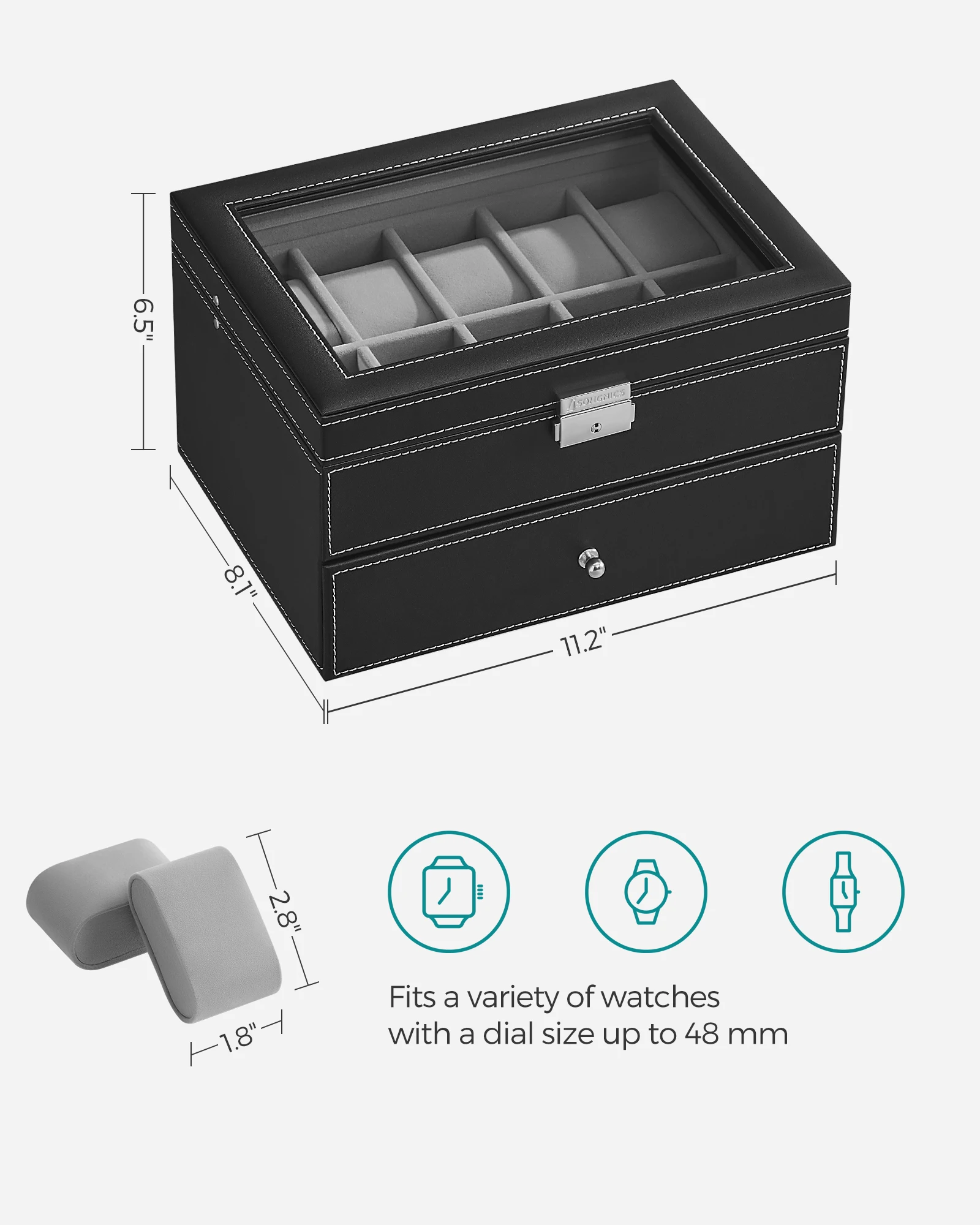
Types of Leather in Quality Watch Boxes:
- Full-grain leather: The highest quality, showing natural texture and developing a beautiful patina
- Top-grain leather: Slightly refined surface, balancing natural character with consistency
- Genuine leather: More affordable but less durable than higher grades
- Bonded leather: Reconstituted leather fibers, offering a leather look at lower cost
- Faux leather: Synthetic alternatives that mimic leather’s appearance and feel
Advantages of Leather Watch Boxes:
The appeal of premium leather watch boxes extends beyond aesthetics. Leather boxes tend to be lighter and more portable than their wooden counterparts, making them ideal for collectors who travel with their watches. The material naturally absorbs minor impacts, providing good shock protection for your timepieces.
Leather also offers excellent flexibility in design, allowing for more innovative storage solutions like roll cases or folding portfolios. Modern leather watch boxes often feature contemporary styling that complements today’s watch designs, particularly sports and casual models.
Potential Limitations:
Leather requires regular conditioning to prevent drying and cracking, especially in low-humidity environments. The material can also be more susceptible to surface scratches and scuffs than hardwood. While high-quality leather develops an attractive patina over time, lower-quality options may deteriorate more visibly. Some collectors also find that leather can absorb odors from the environment over time.
Critical Protection Factors: Keeping Your Timepieces Safe
Regardless of material choice, the primary function of any watch box is protection. Both wood and leather offer distinct advantages in safeguarding your valuable timepieces from environmental threats.
Dust and Debris Protection:
Both materials can effectively keep dust away from your watches when properly constructed. Wood boxes typically feature more precise closing mechanisms, creating tighter seals against dust infiltration. Leather boxes vary more in this regard, with higher-quality options featuring reinforced edges and magnetic or snap closures to minimize dust entry.
Scratch Prevention:
The interior lining is often more important than the exterior material when it comes to scratch prevention. Quality watch box lining materials include:
- Velvet: Soft and luxurious, excellent scratch prevention
- Suede: Natural, soft surface that’s gentle on watch cases
- Microfiber: Modern option that’s particularly effective at preventing scratches
- Silk: Premium option that’s extremely gentle on polished surfaces
Humidity Control:
Wood naturally absorbs and releases moisture, which can help buffer minor humidity fluctuations. However, this same property makes wood susceptible to warping in extreme conditions. Leather is generally less affected by humidity changes, maintaining its shape and function across a wider range of conditions. For collectors in particularly humid or dry climates, boxes with built-in humidity control features may be worth considering regardless of material.
Impact Resistance:
Leather typically offers better shock absorption due to its natural flexibility. Wood provides excellent structural protection but transfers more impact energy to the watches inside. This difference is particularly important for collectors who transport their watches frequently.
Durability and Longevity: Which Material Stands the Test of Time?
When investing in a quality watch box, longevity becomes an important consideration. How the materials age affects both functionality and appearance over years of use.
Aging Characteristics:
Wood and leather age quite differently. Quality wood develops a deeper, richer color over time, with the grain becoming more pronounced. Well-crafted wooden boxes can easily last for generations with proper care.
Leather develops a patina—a natural luster and character that comes from handling and exposure to light and air. The durability of wood and leather watch cases depends greatly on quality, with high-grade examples of both materials offering excellent longevity.
Maintenance Requirements:
Wood requires occasional polishing with appropriate wood care products, protection from direct sunlight, and stable humidity levels. Leather needs regular conditioning (typically every 6-12 months) to prevent drying and maintain suppleness. Both materials benefit from regular dusting and proper handling.
With proper care, a quality wooden watch box can easily last 20+ years, while premium leather options typically provide 10-15+ years of service before showing significant wear. The investment in either material pays dividends through years of reliable protection for your collection.
Aesthetics and Personal Style: Finding Your Perfect Match
Beyond functionality, the aesthetic appeal of your watch box plays a significant role in the collecting experience. The material you choose creates a visual foundation for displaying and enjoying your timepieces.
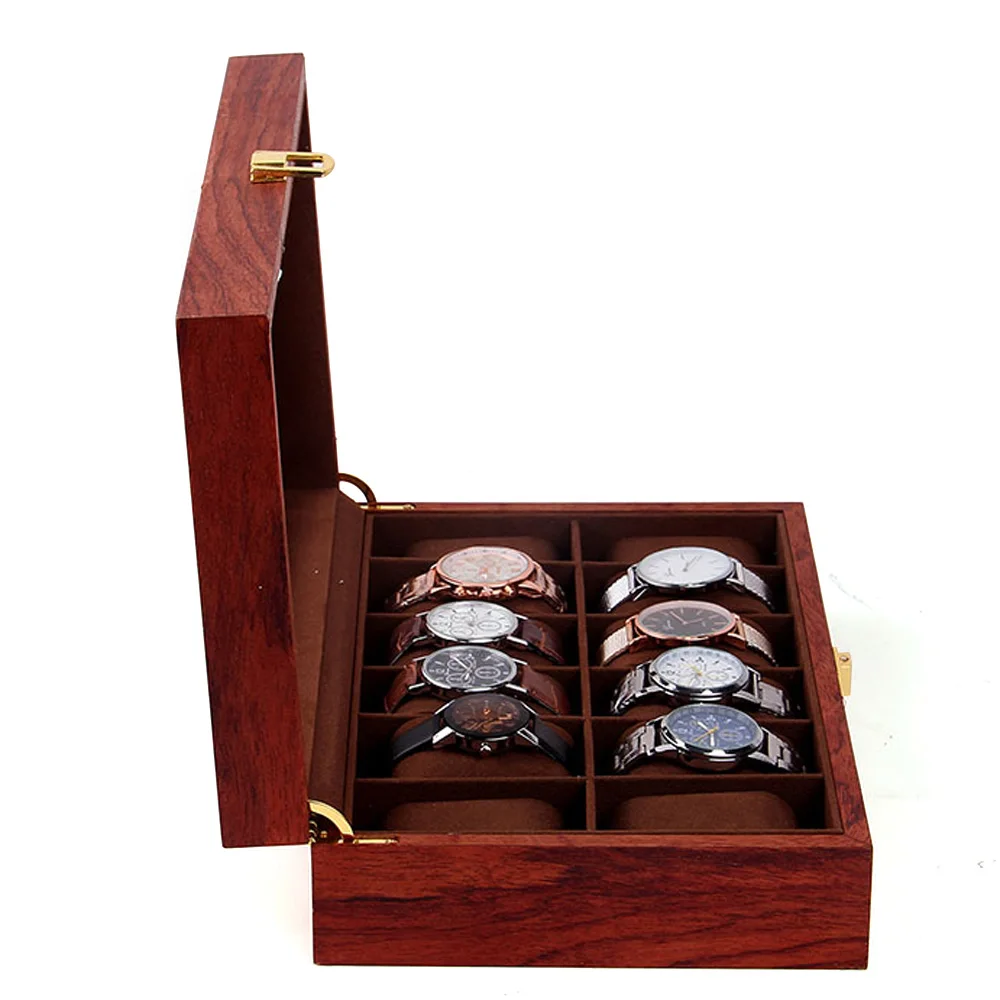
Wood: Timeless Elegance
Wooden watch boxes project permanence and tradition. The natural grain patterns and warm tones create a connection to craftsmanship that complements mechanical watches beautifully. Wood tends to pair particularly well with:
- Classic dress watches
- Vintage timepieces
- Traditional home décor styles
- Heritage watch brands
The variety of aesthetic watch storage options in wood is vast, from light maple to rich mahogany, allowing collectors to match their storage to their personal style and home environment.
Leather: Contemporary Sophistication
Leather watch boxes convey luxury and sophistication with their smooth textures and rich colors. The material has a more contemporary feel that works especially well with:
- Modern watch designs
- Sports and tool watches
- Contemporary interior design
- Fashion-forward watch brands
Leather offers versatility in color options beyond the browns and tans typically associated with wood, including deep blacks, vibrant blues, and rich burgundies.
Investment Considerations: Cost, Value, and Long-term Benefits
Watch boxes represent an investment in protecting and displaying even more valuable investments—your timepieces. Understanding the cost factors helps collectors make informed decisions.
Price Range Factors:
For both materials, price is influenced by:
- Quality of the base material (wood grade/leather grade)
- Construction techniques (hand-crafted vs. mass-produced)
- Interior lining quality
- Additional features (locks, glass tops, drawers)
- Brand reputation
High-quality luxury watch boxes in either material typically start around $100-150 and can reach $500+ for premium options with advanced features. Generally, comparable wood options often cost slightly more than leather alternatives due to materials and construction complexity.
Value Assessment:
When assessing value, consider:
- Protection capabilities relative to your collection’s worth
- Expected longevity of the box
- How well it meets your specific needs (travel, display, storage)
- Aesthetic enjoyment it provides alongside functional benefits
While the initial investment may seem significant, quality watch boxes protect timepieces worth far more than the storage solution itself, making them a prudent investment for serious collectors.
Practicality and Portability: Daily Use Considerations
How you interact with your collection on a daily basis should significantly influence your material choice. Different collectors have different priorities regarding accessibility and portability.
Weight and Portability:
Wooden watch boxes are typically heavier, with a 10-slot wooden box often weighing 3-5 pounds empty, while comparable leather watch boxes might weigh 1-3 pounds. This difference becomes significant for collectors who:
- Travel frequently with their watches
- Move their collection between locations
- Have limited space for storage
- Prefer to bring watches to events or gatherings
Leather’s flexibility allows for design innovations like roll cases and folding portfolios that simply aren’t possible with rigid wood constructions, providing additional portability options.
Daily Access:
Consider how frequently you change watches and access your collection. Leather cases often feature simpler opening mechanisms—zippers, snaps, or magnetic closures—that facilitate quick access. Wooden boxes typically have more substantial lids, sometimes with locks or latches, which provide excellent security but require more deliberate opening and closing.
Environmental Considerations: Sustainable Choices for Conscious Collectors
Today’s collectors increasingly consider the environmental impact of their purchases, including watch storage options.
Wood Sustainability:
The environmental footprint of wooden watch boxes varies significantly based on:
- Wood sourcing (sustainably harvested vs. old-growth forests)
- Processing methods and finishing treatments
- Manufacturing location and shipping distances
- Certifications like FSC (Forest Stewardship Council)
Responsibly harvested hardwoods from managed forests represent a renewable resource with relatively low environmental impact when properly sourced.
Leather Production Considerations:
Leather production traditionally involves:
- Animal agriculture impacts
- Chemical tanning processes
- Water usage considerations
- Manufacturing energy requirements
Eco-conscious collectors may want to look for vegetable-tanned leathers that use less harmful chemicals or consider high-quality synthetic alternatives that mimic leather’s properties without the environmental concerns.
Making Your Decision: When to Choose Wood vs Leather
After understanding the characteristics of both materials, the final decision comes down to matching your specific needs with the material best suited to meet them.
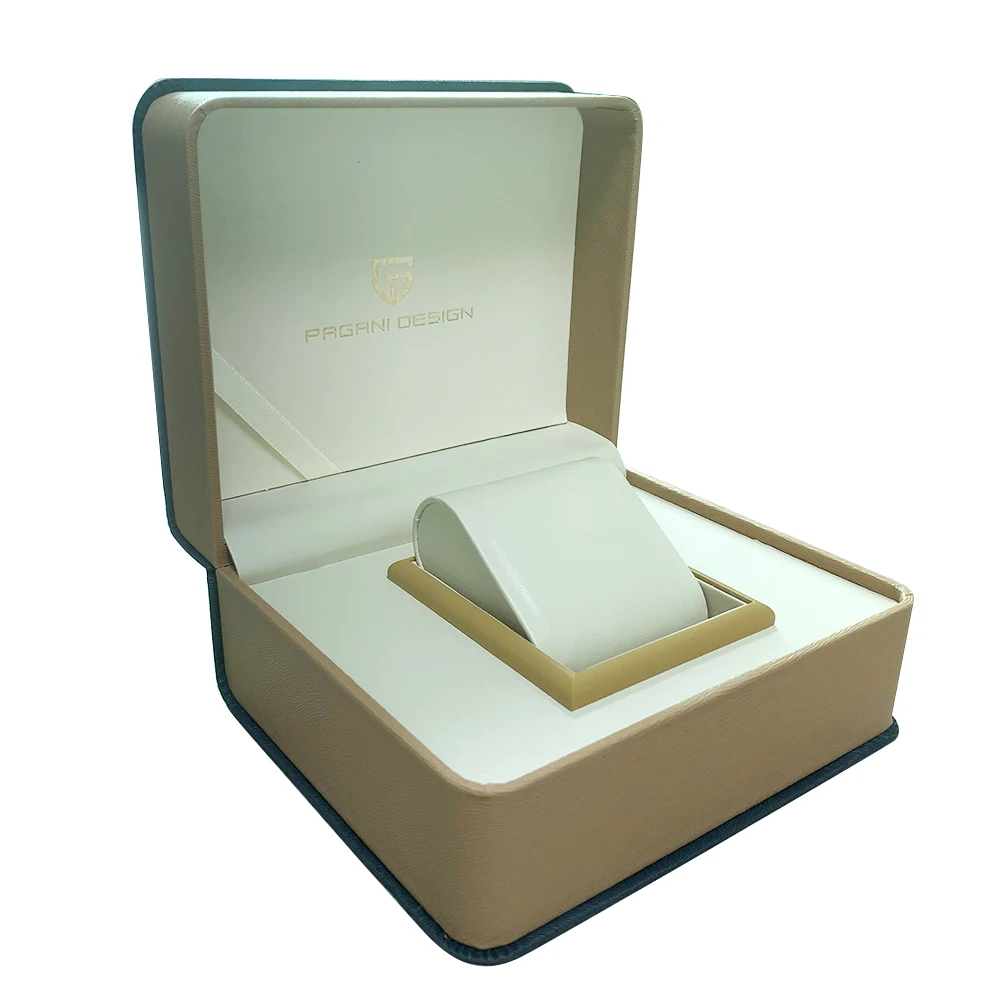
Wood Watch Boxes Are Ideal When:
- You have a permanent collection that stays in one location
- Display is as important as storage
- You prefer traditional aesthetics and natural materials
- Your collection includes primarily classic or vintage watches
- You want a storage solution that can become an heirloom itself
- You live in an environment with stable humidity levels
- You have dedicated space for your watch collection
Leather Watch Boxes Make More Sense When:
- You travel with your watches frequently
- Portability is a priority
- You prefer contemporary, sleek aesthetics
- Your space is limited or changes frequently
- You’re building a collection and need flexibility
- You live in an area with significant humidity fluctuations
- You want a more affordable quality option
Luxury Watch Boxes, Men's Watch Boxes, Single Watch Box
Price range: $903.35 through $980.97 Select options This product has multiple variants. The options may be chosen on the product pageAutomatic Watch Winder, Luxury Watch Winder, Single Watch Box
$307.39 Select options This product has multiple variants. The options may be chosen on the product pageLuxury Watch Boxes, Luxury Watch Travel Case
Price range: $200.33 through $224.57 Select options This product has multiple variants. The options may be chosen on the product page4 Watch Winder, 6 Watch Box, Automatic Watch Winder
$512.31 Select options This product has multiple variants. The options may be chosen on the product pageAutomatic Watch Winder, Double Watch Winder, Leather Watch Boxes
$147.60 Select options This product has multiple variants. The options may be chosen on the product page12 Watch Box, Watch Display Case, Watch Organizer
Price range: $101.20 through $141.30 Select options This product has multiple variants. The options may be chosen on the product page
The best choice for men’s watch boxes often depends on individual style preferences and how the collector interacts with their watches daily. Someone who rotates through watches frequently might prefer the ease of access leather provides, while a collector who views their watches as displayable art might prefer wood’s presentation qualities.
Common Myths and Key Insights About Watch Box Materials
Several misconceptions persist about watch box materials that can lead collectors astray when making their choice.
Myth: “All wood is better than all leather.”
Reality: Quality varies tremendously within both materials. A high-quality leather watch box will outperform a poorly constructed wooden one in nearly every aspect. Construction quality, design, and attention to detail matter more than material alone.
Myth: “Leather doesn’t provide adequate protection.”
Reality: Well-designed leather watch boxes with proper padding and interior lining can provide excellent protection. The flexibility of leather can actually offer superior shock absorption compared to rigid wood construction.
Myth: “Wood watch boxes are maintenance-free.”
Reality: All watch boxes require some maintenance. Understanding the maintenance requirements for wood and leather cases is essential for longevity. Wood needs protection from humidity extremes and occasional polishing, while leather requires regular conditioning.
Key Insight: Interior Matters as Much as Exterior
While much attention is paid to the exterior material, the quality of interior lining and cushioning often has a greater direct impact on watch protection. Look for soft, non-abrasive materials that will maintain their properties over time.
Key Insight: Construction Quality Transcends Material
The quality of joinery in wooden boxes and stitching in leather cases often reveals more about durability than the base material itself. Examining these details provides insight into how well the box will perform over years of use.
Conclusion: Selecting the Perfect Watch Box Material for Your Collection
The choice between wood and leather watch boxes ultimately comes down to understanding your unique needs as a collector. Both materials offer distinct advantages that serve different collecting styles and priorities.
Wood provides a timeless, substantial home for watches that emphasizes display and permanence. Its natural beauty and structural integrity make it particularly well-suited for established collections that remain in one location. With proper care, a quality wooden watch box becomes an heirloom that protects and showcases treasured timepieces for generations.
Leather offers sophisticated protection with greater flexibility and portability. Its lighter weight and adaptable design make it ideal for collectors who travel with their watches or have space constraints. The material’s natural shock absorption and resistance to humidity fluctuations provide practical benefits alongside its luxurious appearance.
When making your final decision, consider not just today’s needs but how your collection and habits might evolve. Many serious collectors eventually find that having both watch box types serves them well—wooden boxes for home display and leather options for travel or office storage.
By prioritizing quality construction and appropriate features for your specific watches, either material can provide the protection and presentation your collection deserves.

